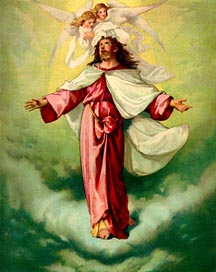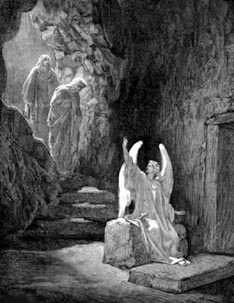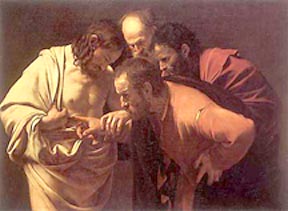

Easter in Poland

Easter, like Christmas, has many varied rituals. Easter's rituals begin with Tlusty Czwartek (Fat Tuesday - February 17, 2015) before Ash Wednesday (the receipt of ashes Sroda Popielcowa) this is the time for eating those delicious and fattening paczki (pronounced "punch-key"). This comes before Gorzkie Zale (or the lamentation services) of Lent all over Poland. If you have ever tried to buy paczki you know that there are bound to be long lines of people all trying to buy and partake of these jelly doughnut treats. In America, we call this "Paczki Day." This is the last day that Polish Christians will partake of any sweets, since the following day Lent begins. Many people will also save money for the poor and make other sacrifices. Rich and poor alike will renounce worldly things and abstain from the pleasures of the senses and certain foods. This comes from the original Passions of Christ that were celebrated by the Apostles. A fast of forty days was adopted because of the forty days that Christ spent in the desert. This tradition goes back to 604 A.D. when Pope Saint Gregory said: "We abstain from flesh meat and from all things that come from the flesh, as milk, cheese, eggs, and butter." For almost one thousand years this was the manner of the fast. The forty days of Lent are called "Wielki Post" or "great Fast."
Palm Sunday is March 29, 2015.
| Common Lenten foods in old Poland were: Beer, soup, pretzels, herring, and zur. |
| Our Lady of the Brooks/of Spring/of Life is the name of the Polish Feast of the Annunciation held on March 25, 2015. |
| A Polish Lenten Passion play was celebrated on March 30, 2001 in Kalvaria Zebrzydowska |
| The Polish Lenten service is called "Gorszkie Zale" or "Bitter Tears." |
| March 12th, 1000. The Polish Catholic Church was established in Gniezno. |
| The currently highest ranking Polish American prelate is Adam Cardinal Maida of Detroit, who was born in 1930. |
Palm Sunday: April 29, 2015:
Traditionally, churches in Poland used the pussy willow branches or dried flowers, instead of palms (lacking an indigenous palms in their country), on Palm Sunday. It is common practice to gently "hit" children with the pussy willows, so they will be "good" and "pure" in the coming year. Some even swallow the catkins, in early days, to ward off sore throats. Crosses were made of the cattails or palms and were hung over the main entry of the house to protect against lightning. Dipped into Holy Water, they were also used to bless the farm animals. Palms from the past year are to be burned. The resulting smoke carries away evil spirits. Often the ashes were added to the soil to bring a fertile harvest.
| Holy Thursday/April 2, 2015; it is the Polish custom to visit seven churches. |

A sepulcher was often built in Polish churches and grottos all over Poland were decorated, as a rememberance to the resurrection of Christ in the cave. This custom is practiced in Buffalo, New York, USA; where many people of Polish descent still live.
Good Friday: April 3, 2015:
| The Third and Fourth Station of the Cross in Jerusalem is celebrated in Polish chapels |
Good Friday was a day for prayer and for later decorating Easter eggs. The Passion of Christ is celebrated at church services. Many villages celebrated in their own unique ways.
Holy Saturday: April 4, 2015:
Today the Tombs of Christ (Boze Groby) are set up. In Polonia and Poland, Easter breakfast is traditionally carried to the church to be blessed on Holy Saturday. Swieconka is the word for the Blessed Easter Foods.
| The drowning of the straw effigy (Marzanna) marks the beginning of spring in Poland. |
Since Easter finds its roots in pagan celebrations of the rites of spring, many pagan customs still survive today. People make plaited dolls, sometimes lifesize, and drown them. This symbolized that Death would not visit their village that year. This was thought to help protect their village from sickness and the plague.
A song was sung:
"We take death from the village
And bought the green branch to the village."
The green branch was a small branch or tree that was decorated with ribbons, feathers, and colored egg shells. This is still celebrated in Polonia, as people hang Easter Eggs and rabbits from their trees in their front yards.
Seeds that will be planted for the year's crops will be blessed in the church.
Easter Day:

The Resurrection Mass began on the rising of the sun on Easter Day (April 5, 2015). The vigil of Easter was called the "Wielkanoc." Often rifles were shot into the air during the mass to announce the arrival of Easter, and were bells rung, by the congregation, during the mass along with those of the priests. Anyone who failed to rise early on Easter day was not allowed to partake of Easter breakfast. In olden days the men of the village would race each other to their homes. Whomever won was thought to be the first to raise their crops at Harvest time. The Blessed Egg is still a part of modern Easter rituals. The egg, of course, symbolized fertility. Older customs had people bringing food to the graveyards so that the dead could also celebrate with the living. The grave of St. Hedwig was a popular site. People who left items of food and flowers upon her grave hoped that she would grant miracles to the sick and they would be healed. In legend, the son of a prominent judge still could not walk by eight years of age. His mother brought him to St. Hedwig. She carried him in her arms. She prayed to St. Hedwig and a miracle was said to have occurred. The boy was baptized by the priest, and he stood up. He then walked around the saint's grave. The abbess was said to have thrown colored and decorated eggs at the boy's feet. He walked from the tomb to his home, and continued to walk for the rest of his life. This miracle was documented as being, "near Easter," from 1274 0r 1287. In the 15th century, the practice of feeding the dead was frowned upon, but it was still common through the 19th century in certain districts of Poland. On Easter Tuesday (April 26, 2011), the villagers would carry eggs, bread, apples, and something to drink to the cemetary. This is much like the Day of the Dead celebration in Mexico and Latin America, however, they do this on November 1st and 2nd (All Saints and All Souls Day). The Polish people also lit candles at night, surrounding the offerings, as is celebrated in Latin America today.
| April 6, 2015 is Dyngus Day(Easter Monday)...the celebrating with the splashing of water and/or the switching with willows |
Easter, like Christmas, is a matter of personal taste today. Most still exchange Easter baskets and hunt for Easter eggs and have a ritual Easter Morning meal.
Polish Easter eggs are works of art, all in their own right. Some eggs are made in the wax technique, while others are decorated with paper cut-outs. Both styles are beautiful.
Another spring rite is the return of the storks. The European white stork is held in high esteem. To have them on your property is to bring your home good luck. Storks who nest in church steeples, are treasured in the community. They bring good luck to all who attend services within the church.
Easter Day brings thoughts of children and farm animals that will be born in the new year. Remember that in early times, the calendar began in March, not in January. This was because spring was always the renewal and new beginning in nature. On Easter day (April 5, 2015), most Poles still go to church. Everyone dresses in their Sunday best, with bright spring colors, to celebrate the return of leaves to the trees, the flowering of spring blooms, and the birth of baby critters in nature. Many hats are adored with these same flowers. Many Polish families make and eat "Easter Cheese" which is a combination of cottage cheese, cream cheese and sour cream. This mixture is placed in a linen bag and tied up to dry for a few days. After it sets up, it is frozen and cut into chunks to eat."Easter Soup" is another favorite. This is a soup with thinly sliced or cubed kielbasa, ham, hard cooked eggs, radish root and bread.
The traditional Easter meal is Easter barszcz. Typical fare is zur, (zur=barley-flour soup with eggs and sausage), kielbasa, hams, jellied pig's feet, beets with horseradish, eggs boiled with onion skins, and babka.
This page was last updated on March 27, 2015
